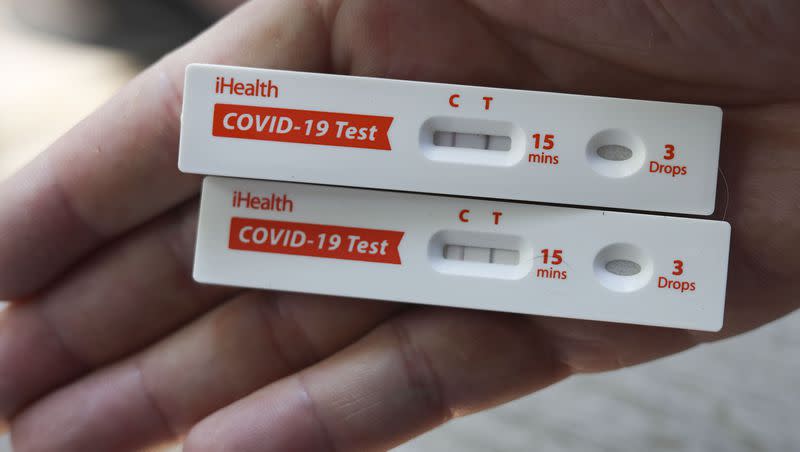COVID-19 indicators continue to rise. Here’s what Utahns can do

Utah’s COVID-19 indicators are continuing to creep up ahead of Labor Day weekend.
As of Thursday, case counts, emergency room visits and hospitalizations for the coronavirus were increasing in the state, according to data posted by the Utah Department of Health and Human Services.
The seven-day average case count rose 18% over the past week, to 133, while the same average for hospitalizations is up 32%, to just over 42. The percentage of emergency room visits for COVID-19 increased 11.5%, but is still less than 2%.
Related
Worried about COVID-19? It may be time ‘to whip out the mask,’ experts say
COVID-19 cases keep climbing. Should you get a booster shot?
Another key indicator of virus spread, the amount detected in wastewater, shows levels are rising in nearly 9% of the sewage treatment plants tested throughout the state. None currently have elevated levels, although almost 47% are at a “level of potential concern.”
Two additional deaths from COVID-19 in Utah have been reported, a Salt Lake County woman older than 85 and a Washington County man between 65 and 84. Utah’s death toll from the virus is now at 5,415.
Numbers are going up nationally, too, with hospital admissions for COVID-19 in the U.S. increasing just under 19% for the week ending Aug. 19 while deaths rose more than 17% for the week ending Aug. 26, according to the Centers for Disease Control and Prevention.
With Utahns heading into a long holiday weekend amid the increases in COVID-19, the advice from state public health officials is likely to sound familiar.
“Just the same stuff we’ve always said,” Charla Haley, a spokeswoman for the state department of health and human services, said. “If you’re sick, stay home. Wash your hands often. Cover your coughs and sneezes.”
Some experts are suggesting additional precautions, including masking.
Not only is the current dominant variant of the virus, EG.5 or Eris, driving a summer surge, there’s a newer version of the virus raising concerns. The CDC is warning BA.2.86, known as Pirola, may be better at infecting people who’ve been vaccinated or had COVID-19.
“If you’re trying to be careful, it’s time to whip out the mask again,” Dr. Robert Wachter, a University of California San Francisco professor, recently told CNN, saying people may be at twice the risk for infection than they were a month or two ago.
A few mask mandates have already been imposed amid outbreaks around the country, including at Morris Brown College in Atlanta, and various hospitals in New York and California. A masking requirement at a California movie studio has been lifted.
Related
At two Upstate Medical University hospitals in Syracuse, New York, all staff, visitors and patients were ordered in mid-August to wear masks in clinical areas for at least three weeks to deal with increasing numbers of patients and employees with COVID-19.
“People didn’t really seem to think twice about it,” Dr. Stephen Thomas, an infectious disease physician and professor of medicine at the university, told NPR’s “Morning Edition” Thursday.
Thomas said while “there are always outliers” who question whether the move would make a difference, “we try to communicate that universal masking, in health care settings, the data is very clear: It reduces transmission.”
In Utah, lawmakers ended a statewide mask mandate in 2021 and later overturned masking requirements in Salt Lake and Summit counties put in place by local authorities during last year’s record-setting outbreak due to the omicron variant of the virus.

